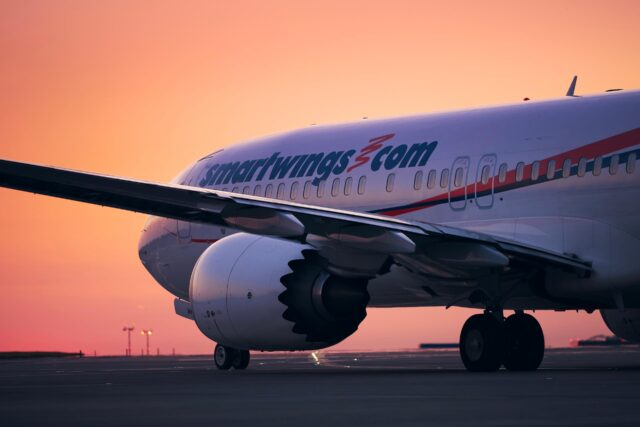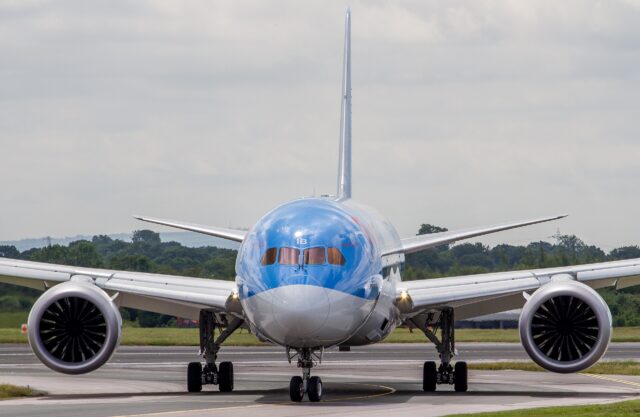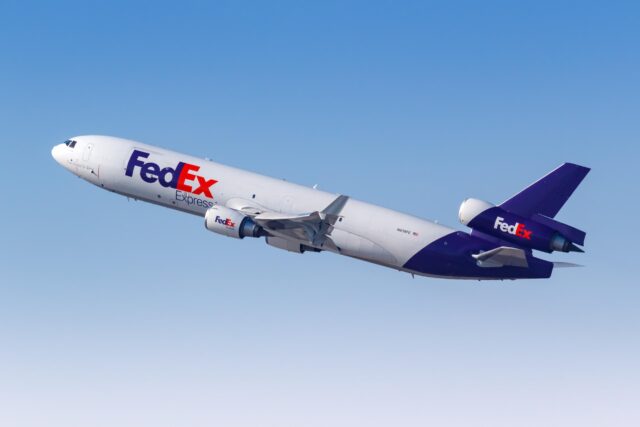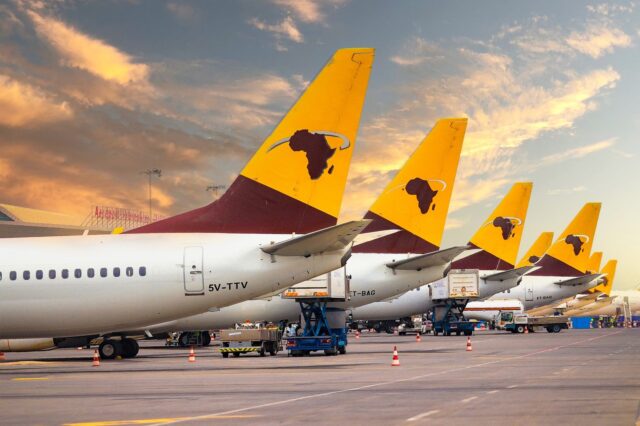AGN Exclusive: Air Transat COO on the airline’s journey from fully digitalised to AI-native

October 9, 2025

Air Transat’s biggest transformation in decades is well underway. The Canadian carrier is migrating its core operational backbone to Lufthansa Technik’s integrated digital ecosystem, encompassing FlyDocs, AMOS, and AVIATAR, in a decisive break with the paper-bound past.
“We’re going to be the first North American airline to transition fully to the Lufthansa Group system,” Marc-Philippe Lumpé, Air Transat COO, told AGN on the sidelines of the World Aviation Festival in Lisbon. “It’s not just digitisation, it’s digitalisation, and it’s the backbone that’s required before you can even begin thinking about AI.”
The project underpins Transat’s evolution from a tour-operator-style business into a data-driven network airline, one that can use predictive analytics to keep aircraft flying, optimise schedules, and make faster, evidence-based commercial decisions.
From predictive maintenance to AI-native operations
At the operational level, the most visible change is the roll-out of AVIATAR, Lufthansa Technik’s predictive-maintenance platform, which went live at Air Transat in June. The system monitors aircraft health in real time and recommends part replacements before failures occur.
“Predictive maintenance is about changing parts before they break, but not too early either,” Lumpé explained. “We’ve been using the system since June, and already we’ve had lots of good feedback and avoided some issues.”

But with any AI system, there’s a process of learning to go through. As Lumpé explained, you can’t just switch it on and expect it to work well. “It’s like onboarding a new colleague,” he said. “You have to show it around, teach it how your company works, and then it starts to perform.”
By combining AVIATAR with FlyDocs and AMOS, Air Transat gains a single digital thread linking aircraft records, maintenance history, and live performance data. The integration removes the need for manual data bridges and endless paperwork.
“We used to drag along tractors of paper per aircraft,” Lumpé smiled. “Now everything is live, traceable, and instantly shareable.”
Implementing AI successfully in Air Transat
From becoming a digitalised airline, Air Transat is in the enviable position to begin truly embracing AI as an AI-native. “What people often forget in the frantic race towards artificial intelligence is that you have to make sure everything is digitalised first.“
That digital journey has been long, starting with the implementation of ATMOS in 2007 and flydocs in 2024. The final piece of the puzzle is AVIATAR, including the comprehensive suite of applications – Condition Monitoring, Predictive Health Analytics, Technical Logbook, Engineering Analytics and the Reliability Suite.
But as advanced as the technologies are, Lumpé noted the importance of the human factor in successful implementation. “Digitalisation is probably 70% people, 30% technology,” he said. “If you don’t take your teams with you on this journey, it will fail.”

Having joined Air Transat three and a half years ago, he launched a series of internal change-management programmes to prepare staff for this shift. “They’ve seen so many positive impacts that they now trust the process. There’s anxiety, of course — this change is drastic — but once people experience how powerful these tools are, enthusiasm replaces fear.”
Just as in decades past, the advent of robotics made factory workers fear for their jobs, so today many look at their role and wonder if they’ll eventually be replaced by a computer. But Lumpé is hopeful that AI and machine co-workers will have a positive impact on their human colleagues.
“We’re right at the start of this journey today, but we could be in for a pleasant surprise,” he said. “These technologies are going to take away some of the more frustrating aspects of work, and allow people to play more to their strengths. I believe it will result in a more rewarding and fulfilling job environment. “
Beyond maintenance: How AI will reshape pricing and planning
Lumpé believes maintenance is only the beginning. The airline is now turning its attention to the commercial side, where AI can transform network planning, revenue management, and marketing.
“With the right data, we can match fares and demand much more accurately,” he said. “If you can spot unmet demand early enough, it’s better to sell a seat at a lower price than not fill it at all. So, yes, AI can actually lead to lower fares.”

This analytical capability also extends to marketing, where Air Transat hopes to deliver genuinely useful personalised offers rather than algorithmic upselling.
“There’s a fine line between having personalised offers and manipulating people and buying stuff they don’t need,” he noted. “But on the positive side, it can help you have a relationship with your passengers that is going to actually be beneficial to them.”
AI in aviation: Working with people, not replacing them
While optimistic about automation, Lumpé is clear that human oversight will remain indispensable. “AI makes mistakes — and it can sell those mistakes in very convincing ways,” he warned. “You still need that second set of eyes.”
For him, AI should work with people, not replace them. “Think of it as a good colleague who usually gives you the right advice, but not always. You check when it matters. That’s how we approach it.”
Looking ahead, Lumpé believes that the coming decade will separate digital leaders from laggards. “An airline start-up launching in 2028 will be AI-data native, that’s for sure,” he said. “Carriers that don’t transform on the go will disappear.”
By completing its digital groundwork early, Air Transat hopes to gain a lasting competitive edge. “You’ll be faster, more agile, and able to do things that simply aren’t possible today,” Lumpé concluded. “Come the end of the 2020s, being AI-native won’t be optional — it’ll be a necessity for survival.”
















